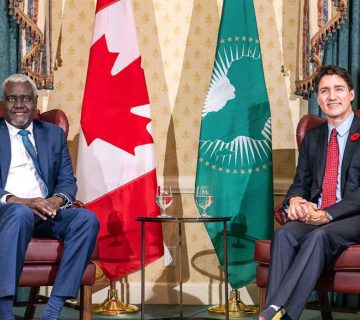Environmental conflict is a social struggle over natural resources (renewable and non-renewable sources), often resulting from inequalities and lack of benefit-sharing of resources. As the global population continues to rise and demand for resources continues to grow, there is significant potential for an upsurge of violent environmental conflicts in the coming decades as depletion and scarcities increase. A study conducted by United States Institute for Peace in 2017 revealed that many communities in developing countries rely on renewable resources such as water, biomass, fisheries, land (soil), and forest resources among others. The study also shows that majority of the populace that heavily rely on these resources are women, as they are primarily responsible for domestic and household management, and interact intensively with the natural environment compared to men. The struggle over renewable resources mainly impact economic and food security, and as a result, can become unpredictable. As the principal users of renewable resources in many environmental conflict-laden contexts, women have a key role to play. However, they remain largely excluded from benefiting from resource wealth or participating in decision-making on resource management.
Le Billon, a renowned geographer, identifies two major factors in the environmental conflict in which increasing resource scarcities are produced through resource enclosure by state authorities, private firms, and ethnic communities that accelerate conflict between groups. First, there is politicization of environmental conflicts where local groups secure control of collective resources at the expense of others. This results in the marginalization of certain groups, insecure occupancy status, and inequitable exploitation of the resources, among others. Second, it is the ecologization of pre-existing conflicts emanating from changes in conservation or resource development policy, which leads to poverty, crime, physical abuse, psychological abuse, a breakdown of traditional family, and community structure, among other factors.
A study conducted by United Nations Women (2013) revealed that in developing countries, 60 to 85 per cent of women lack access to renewable resources. The plight occasioned by these environmental conflicts over the recent years is devastating. From research and grey literature available out there, it is clear that Kenya is facing a challenge with regard to the management of renewable resources. Of note, these resources are not replenishing at a rate that can handle the increasing population. The 2004 Nobel Laureate Hon. Professor Wangari Maathai, in her book The Greenbelt Movement: Sharing the Approach and the Experience, notes that “…if we did a better job of managing our resources sustainably, conflicts over them would be reduced, so, protecting the global environment is directly related to securing peace.”
In the last few years, Kenya has faced several environmental conflicts over renewable resources ranging from the Tana River land conflict (2012-2013), Embobut forest evictions in Elgeyo Marakwet (2014 and 2017), Meru-Isiolo clashes over land (2017), invasion of ranches in Laikipia by herders (2017), to evictions at Mai-Mahiu forest and Lelan forest in 2018. In May 2018, Amnesty International released a report on the evictions of the Sengwer indigenous people of Embobut Forest that took place in 2017. In Embobut, more than 50 Sengwer women interviewed stated that their husbands had left the homesteads following as a disruption of livelihoods occasioned by this conflict and the inability to provide for their families. This in turn, significantly affected women as they became sole breadwinners, at least in the interim. The impacts experienced by women included the loss of the traditional medicines (through burning), destruction of houses and household property, and disruption of schooling.
While entire families are affected by environmental conflicts, but it is the women who suffer most from privation. Women’s experiences during times of environmental conflicts include, but are not limited to theft, physical abuse, psychological abuse, sexual harassment, and sexual assault (including rape), reproduction violence which can be linked to sexual violence (such as unwanted pregnancies, unsafe abortion, complications from high risk pregnancies and sexually transmitted diseases) and, exploitation such as overpricing of goods and services. This outlook is important given that environmental conflicts often result in displacement, migration, and refugees.
Nevertheless, it is important to note that women are not simply victims, they are effective agents of change in relation to both mitigation and adaptation to environmental changes and conflict. The Canadian International Development Agency (CIDA’s) (2008) gender analysis provides an understanding of the different ways that legislation, cultural practices, policies, and programs affect men and women. According to this approach, gender analysis should be conducted during the design of a policy or program to avert widening gender inequalities. Women empowerment is critical in sustainable human development in relation to the environment and should be recognized and sustained so as to yield better outcomes.
Seclusion of women from the decision-making process on environmental matters makes it difficult (for them) to have their voices heard, which in turn, affects the environment they interact with. Consequently, women should be encouraged to participate in committees on environmental protection, programs, and policies to address gender imbalances in decision making, governance processes related to natural resource management and implementation of legislative policies. Further, women’s access to resources and opportunities should be strengthened by law and policy. A good example is enforcing the law that was enacted in 2010 to have one-third of the members of parliament allocated to women so as to allow them to share more broadly in the benefits of natural resource use and sustainable development. Women’s role in peace-building, environmental conflict prevention, and mitigation should be enhanced to pave way for gendered approaches that are synergetic and inclusive.
Mary Y. Ododa is a Research Assistant at the HORN Institute



